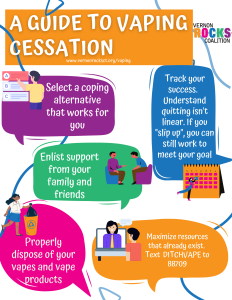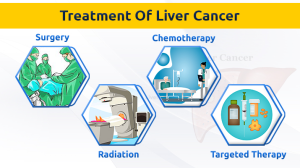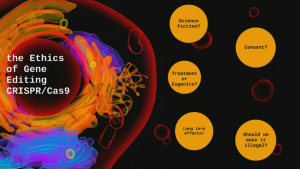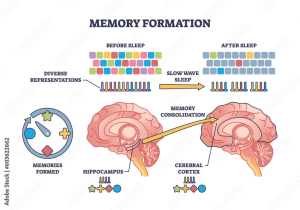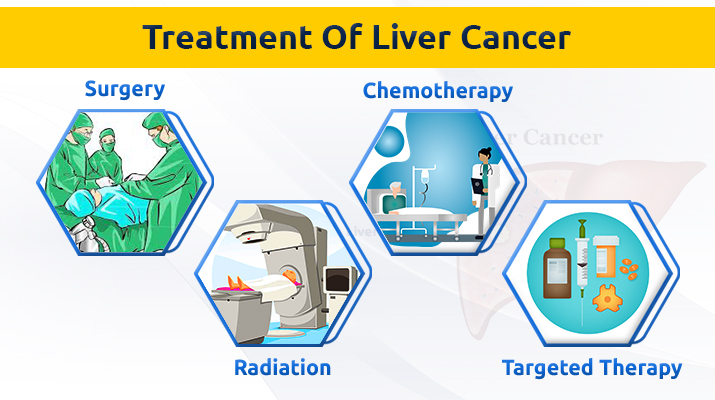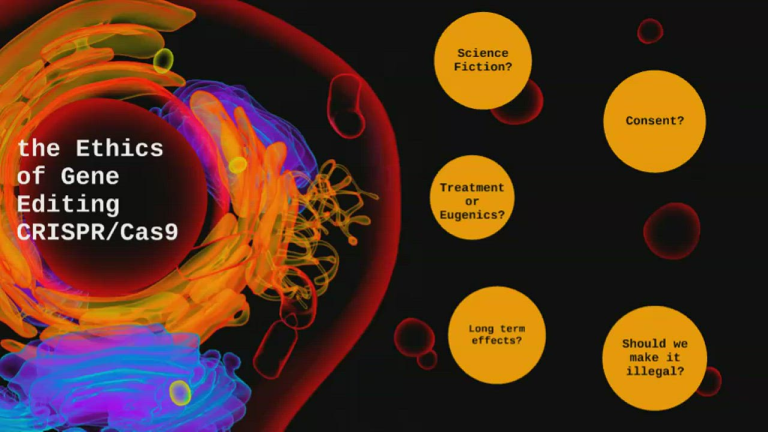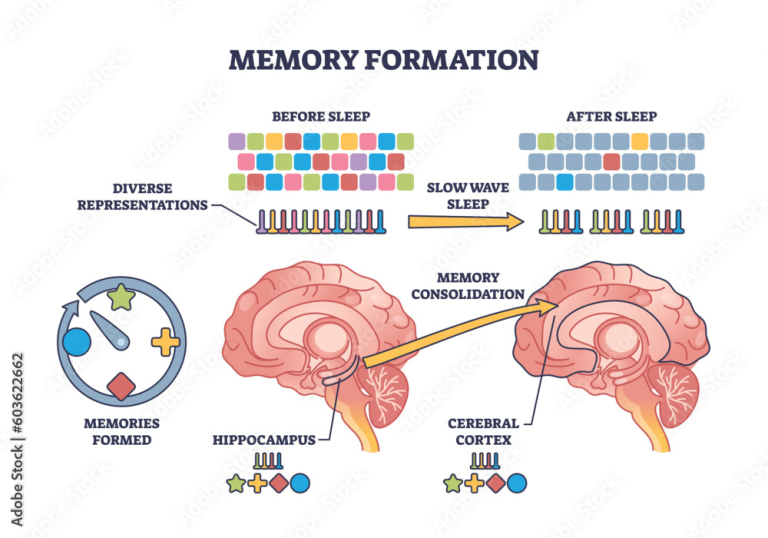The vaping cessation pill, varenicline, offers a groundbreaking approach to combat the rising nicotine addiction among teens and young adults. Recent studies show that this FDA-approved smoking cessation medication can significantly enhance quit vaping effectiveness, making it a vital tool in addressing nicotine-related health risks. Research conducted by Mass General Brigham revealed that participants using varenicline were more than three times as likely to successfully quit vaping compared to those relying solely on behavioral counseling. This breakthrough treatment not only targets nicotine addiction treatment but also aims to prevent future drug dependencies often linked to early vaping exposure. As vaping continues to endanger the health of adolescents, varenicline emerges as a beacon of hope for recovery and health restoration.
The emergence of a new medication for quitting vaping marks a significant shift in how we perceive nicotine addiction, especially among youth. Known commonly as the smoking cessation pill, varenicline represents a highly effective strategy to assist young individuals in overcoming their vaping habits. With the alarming rise in e-cigarette use, particularly among adolescents, innovative solutions like this can address not just the immediate cravings but also the broader health implications associated with nicotine consumption. Studies highlight the pill’s positive impact, underscoring its potential role in a comprehensive nicotine addiction treatment program. This targeted intervention not only supports quitting efforts but significantly mitigates the health risks linked to vaping.
The Rise of Vaping Among Teens and Young Adults
Vaping has emerged as an alarming trend among teens and young adults, reshaping the landscape of nicotine consumption. Current statistics reveal that approximately 25% of 18-to-25-year-olds engaged in vaping in 2023, highlighting its accessibility and popularity. This rise in usage is particularly concerning given the well-documented health risks associated with vaping, including nicotine addiction and exposure to harmful substances such as heavy metals and carcinogens. As these individuals become dependent on nicotine, it raises the stakes for effective cessation methods to combat this growing epidemic.
Health experts warn that early exposure to nicotine can have dire consequences, potentially increasing susceptibility to other addictive substances later in life. Studies have shown that young individuals who use nicotine products are at a higher risk of developing long-term addiction issues. As we delve into vaping cessation strategies, understanding the weight of addiction in this demographic is imperative, marking a significant public health challenge that must be urgently addressed.
Varenicline: A Promising Vaping Cessation Pill
Varenicline, an FDA-approved smoking cessation pill, has proven to be an effective tool for helping young people quit vaping. Recent studies conducted by Mass General Brigham indicate that participants aged 16 to 25 taking varenicline experienced quit rates three times higher than those taking a placebo. This positive outcome emphasizes varenicline’s potential in nicotine addiction treatment, particularly among adolescents and young adults who historically have limited treatment options available to them.
The clinical trial results are encouraging, showcasing a significant jump in successful quit attempts among varenicline users. In just 12 weeks, 51% of the participants taking varenicline had completely stopped vaping, compared to a mere 14% in the placebo group. This underlines the impact that pharmacological interventions can have alongside behavioral support, proving that comprehensive approaches are key to overcoming vaping addiction.
Understanding the Health Risks of Vaping
Vaping is frequently marketed as a safer alternative to traditional cigarettes, yet this perception can be misleading. The health risks associated with vaping are paramount, as users are still exposed to detrimental chemicals that affect both physical and mental well-being. Young people, in particular, are at risk due to their developing bodies and susceptibilities to addiction, which can lead to long-term health implications. Vaping has been linked to respiratory issues, increased heart rates, and psychological effects related to nicotine dependence.
Moreover, the dual presence of nicotine and additional harmful substances in vape devices complicates matters further. Adolescents who begin vaping may find themselves not only addicted to nicotine but also experiencing adverse reactions related to other components in e-liquids. This underscores the necessity for healthcare providers to develop robust education programs that inform users and potential users about these serious health risks, alongside advocating for effective cessation tools like varenicline.
The Role of Behavioral Counseling in Cessation
While pharmacological assistance from medications like varenicline is crucial, integrating behavioral counseling significantly enhances the chances of successful cessation. The synergistic effect of medication and counseling was highlighted in the recent trial, where participants who received weekly behavioral support in addition to varenicline recorded higher quit rates compared to those receiving either treatment alone. This approach underscores the multifaceted nature of addiction recovery, particularly in younger demographics.
Behavioral counseling provides young users with essential coping strategies, reinforcing motivation to quit and helping them navigate the emotional and social challenges that accompany cessation. Professionals can work with individuals to understand the triggers that lead to vaping and offer alternatives, fostering a comprehensive support system. As we continue to address vaping among youth, the importance of combining therapeutic interventions cannot be overstated.
Success Rates of Vaping Cessation Methods
Success rates among various vaping cessation methods reveal a stark difference in outcomes, emphasizing the effectiveness of evidence-based treatments such as varenicline. Findings from clinical trials indicate that those who utilize a combination of medication and behavioral counseling have a significantly higher chance of quitting compared to those relying on nonspecific support methods. This offers a promising avenue for addressing nicotine addiction, particularly for adolescents who may have been previously overlooked in cessation initiatives.
The distinction between varying levels of success among cessation methods also highlights the necessity for tailored approaches in treatment plans. As vaping becomes more prevalent, understanding the demographics of users can better direct healthcare services toward creating specific support systems. By navigating these complexities, we can improve quit vaping effectiveness and minimize the long-term health consequences associated with vaping addiction.
Ongoing Research into Vaping Cessation
Research surrounding vaping cessation methods is constantly evolving, particularly as new trends emerge within the adolescent population. Current studies, such as those observing the effects of varenicline in young adults, illustrate the need for ongoing exploration of innovative treatments. With more than a quarter of young adults reporting vaping usage, identifying effective therapeutic approaches becomes not only a public health concern but an urgent necessity.
As researchers continue to explore various facets of vaping cessation, their efforts will likely lead to broader insights into the psychological and physiological responses to nicotine addiction. Future studies may also focus on populations outside of the existing age range, examining the behavioral and health ramifications for even younger users. Continuous investment in this research is essential for developing strategies that can effectively combat the vaping epidemic and foster healthier futures for all.
The Importance of Early Intervention
Intervening early in the vaping habit formation stage is critical to preventing long-term addiction. As evidence shows, early exposure to nicotine can lead to more severe dependency and increased potential for experimenting with other drugs. Programs aimed at education and intervention can provide youth with vital information and coping mechanisms that reduce the likelihood of sustained substance abuse. Hence, early strategies serve as protective factors against the escalating trend of vaping.
Healthcare providers and educators play crucial roles in promoting early intervention strategies. Implementing school-based programs focused on the dangers of vaping, coupled with facilitating access to cessation resources like varenicline, can significantly decrease the rates of nicotine addiction among teens and young adults. Through collaborative efforts, communities can foster supportive environments that empower youth to make informed choices about their health.
Education and Awareness on Vaping Risks
Raising awareness about the risks associated with vaping is essential in the fight against nicotine addiction among young people. Educational programs tailored for schools and communities can help counteract the misleading narratives that often portray vaping as a harmless activity. By emphasizing the real health dangers and addiction potential associated with vaping, we can equip teens with the knowledge needed to make informed decisions and ultimately reduce usage rates.
Moreover, public awareness campaigns that highlight the success of medications like varenicline in quitting vaping can motivate young users to seek help. When education is coupled with accessible resources, it fosters an environment where youth feel empowered to address their vaping habits. As a result, targeted education will play a vital role in shifting public perception and reducing the prevalence of vaping among today’s adolescents.
Supporting Adolescents Through Recovery
Supporting adolescents through their recovery from vaping addiction requires a community-focused approach, involving parents, educators, and healthcare providers. By fostering a supportive atmosphere that encourages open discussions about vaping and its risks, we can dismantle stigma and better assist young individuals in their cessation journeys. Programs that provide support networks, peer mentoring, and readily available resources are crucial in this process.
Furthermore, integrating family involvement in cessation programs can enhance outcomes for teens and young adults battling nicotine dependence. Parents can play a pivotal role in their children’s recovery by being informed and actively engaged in their support journey. Collectively, these efforts yield a stronger foundation for recovery, reinforcing the notion that quitting vaping is a viable and supported choice.
Frequently Asked Questions
What is the vaping cessation pill and how does it work?
The vaping cessation pill, specifically varenicline, is an FDA-approved medication designed to help individuals break free from nicotine addiction. It works by targeting nicotine receptors in the brain, reducing withdrawal symptoms and cravings, thereby making it easier for users to quit vaping.
Can varenicline help teens and young adults quit vaping effectively?
Yes, clinical trials have shown that varenicline is particularly effective for teens and young adults. Participants aged 16 to 25 who used varenicline were over three times more likely to successfully quit vaping compared to those who only received behavioral counseling.
What are the health risks associated with vaping that varenicline can help address?
Vaping poses several health risks, including nicotine addiction, exposure to carcinogens, heavy metals, and pulmonary inflammation. The vaping cessation pill, varenicline, provides a safe and effective way to help mitigate these risks by assisting users in quitting.
How does varenicline compare to behavioral counseling for vaping cessation?
In studies, varenicline users demonstrated significantly higher quit rates than those who solely relied on behavioral counseling. After 12 weeks of treatment, 51% of varenicline users had stopped vaping compared to only 14% in the placebo group.
Is varenicline a suitable option for those struggling with nicotine addiction from vaping?
Absolutely, varenicline is approved for smoking cessation in adults and can be prescribed to individuals aged 16 to 25 who are struggling with nicotine addiction from vaping, making it a viable option for this demographic.
Are there any safety concerns associated with using varenicline for quitting vaping?
Research indicates that varenicline is safe for use in teens and young adults. Notably, participants who quit vaping did not transition to cigarette smoking, suggesting that varenicline effectively addresses nicotine dependence without introducing new smoking behaviors.
What does the research say about the effectiveness of vaping cessation pills?
Recent studies highlight the effectiveness of varenicline, with participants experiencing three times the success rate in quitting vaping compared to placebo users. This showcases the potential of vaping cessation pills in combating nicotine addiction.
What is the next step for research on vaping cessation pills like varenicline?
Future research is essential to explore additional therapeutic approaches for vaping cessation and to study the effects on younger populations. The current findings underline the importance of effective treatments for nicotine addiction among adolescents.
| Key Points | Details |
|---|---|
| Vaping Cessation Pill Approval | Varenicline is FDA-approved for smoking cessation and is now shown to help youth quit vaping. |
| Study Population | Involving 261 participants aged 16-25 who were part of a randomized clinical trial. |
| Success Rates | 51% of participants using varenicline successfully quit vaping at 12 weeks, compared to 14% with placebo and 6% with text support only. |
| Behavioral Support | Participants received weekly behavioral counseling alongside the treatment and a text support service. |
| Safety of Varenicline | The study reported no harmful side effects, with participants not turning to cigarettes after quitting vaping. |
| Future Research | Further studies needed to evaluate other treatment methods for younger users of nicotine vapes. |
Summary
The vaping cessation pill, varenicline, has proven to be a significant breakthrough in helping teens and young adults quit vaping. This FDA-approved medication has shown three times higher success rates compared to placebo treatments, illustrating its effectiveness when combined with behavioral support. With the popularity of vaping among youth posing serious health risks, varenicline offers a safe and efficient option for those seeking to overcome their nicotine addiction.
